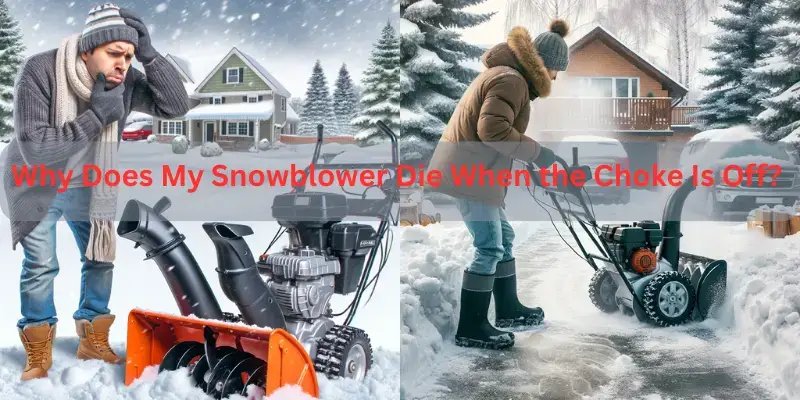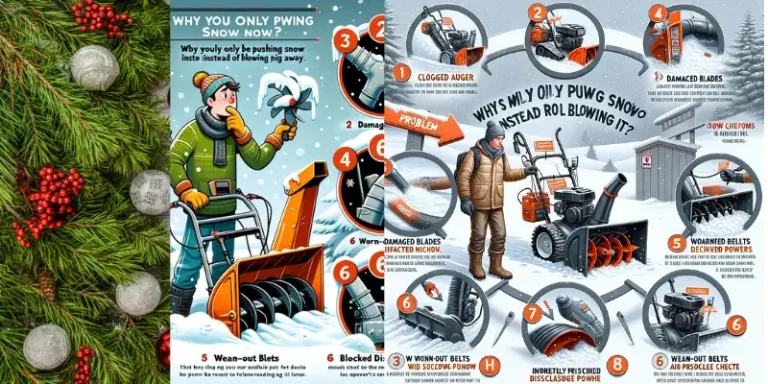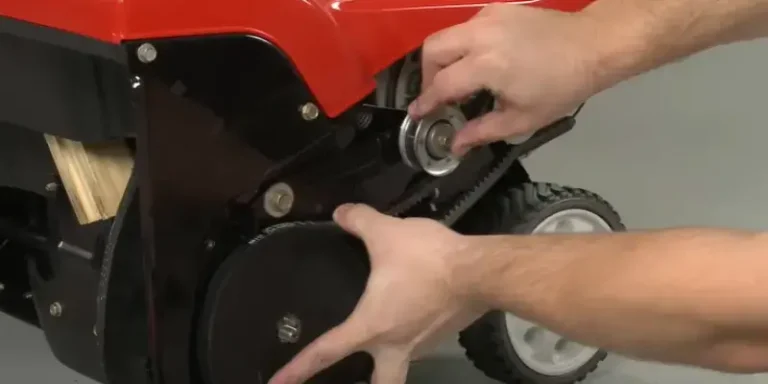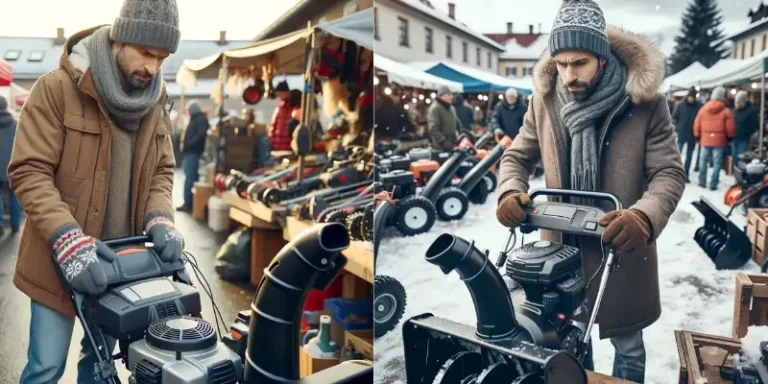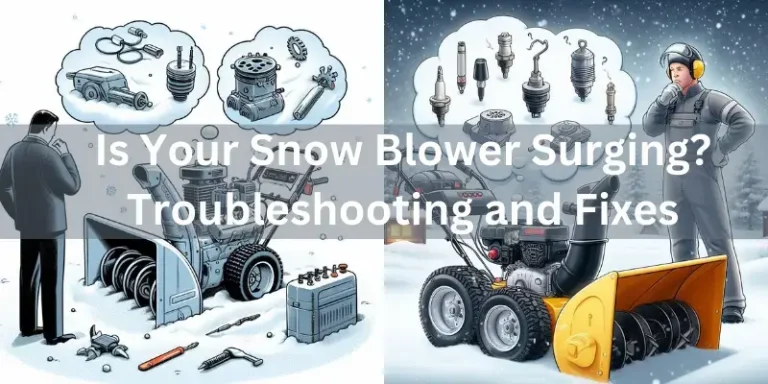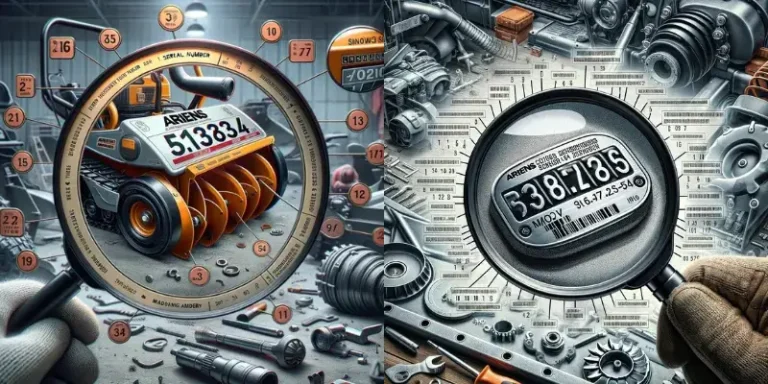Why Does My Snowblower Die When the Choke Is Off? Solution
As the winter season is on peak and homeowners are clearing driveways, and pathways daily to continue their daily activities, Snowblower is the most important machine nowadays.
It’s disheartening when you start blowing the snow and your blower stops working. The problem is frequent and most people are asking “Why Does My Snowblower Die When the Choke is Off?
In this blog, I will provide you with an easy solution so that you can easily tackle this problem at home. Let’s start!
Why Does My Snowblower Die When the Choke Is Off?
When a snow blower dies after the choke is turned off, a blocked or damaged carburetor often lies at the heart of the issue. The carburetor regulates the fuel-to-air ratio for combustion in the engine. If it is blocked or damaged, the engine won’t receive the correct mixture, causing it to stall.
TROUBLESHOOTING STEPS: BLOCKED OR DAMAGED CARBURETOR
There are two REASONS that your Snowblower dies when the Choke Is Off.
First Reason: Your Snow Blower Carburetor is Blocked or Clogged
You can easily address this problem by simply following these steps:
Step 1: Inspect the Carburetor:
In the first step closely inspect the carburetor. Look for any signs of debris, dirt, and gunk that might be blocking the supply of fuel and disturbing its functioning.
Step 2: Cleaning of Carburetor:
Secondly, now you can clean the carburetor by opening the screws, you can thoroughly clean the carburetor from the inside using any soft brush or you can use air.
Step 3: Checking Fuel Lines
In this step, you can check the fuel lines for blockage but do not dismantle further because it’s complicated to close the carburetor completely if you open the fuel lines, just use air to clean it thoroughly.
Step 4: Verify Choke Operation:
Now verify the choke operation that it’s functioning correctly. A malfunctioning choke can affect carburetor performance.
Step 5: Re-install the Carburetor:
Lastly, re-install the carburetor carefully. Your equipment started easily because now the fuel supply is started continuously without any disruption.
Second Reason: Replacing the Carburetor
You can easily replace the carburetor by following these steps:
Step 1: Gather Tools and Safety Gear
Before starting, make sure you have the necessary tools like a wrench or screwdriver, and wear safety goggles and gloves to protect yourself.
Step 2: Turn it off
Ensure the machine is completely turned off, and disconnect the spark plug wire to prevent accidental starts.
Step 3: Locate the Carburetor
Find the carburetor in your snowblower. It’s usually near the engine and has fuel lines attached to it.
Step 4: Remove the Old Carburetor
Using the appropriate tools, carefully disconnect the fuel lines and any other connections attached to the carburetor. Then, unscrew and remove the old carburetor from its mounting position.
Step 5: Install the New Carburetor
Take the new carburetor and position it correctly where the old one was. Attach the fuel lines and other connections securely, following the manual or guidelines provided.
Step 6: Reconnect the Spark Plug Wire
Once the new carburetor is in place, reconnect the spark plug wire.
Step 7: Test the Snowblower
Turn on the blower and let it run for a few minutes to ensure the new carburetor is working properly. Check for any leaks or unusual noises.
Tips to Avoid a Blocked Carburetor (Winter Maintenance Practices)
Maintaining your snowblower during winter months is key to preventing carburetor issues. Consider the following:
Fuel Stabilizers:
Adding a fuel stabilizer to your machine gas tank before storing it is a smart move. This stabilizer helps prevent fuel breakdown over time. By keeping the fuel fresh, it prevents the formation of gunk and residue that can clog up the carburetor, ensuring it stays clean and functions smoothly.
Draining the Fuel Tank:
Before storing your blower for the season, it’s essential to drain the fuel tank completely. Stale fuel tends to build up and can create blockages in the carburetor. By emptying the tank, you reduce the chances of any leftover fuel turning into harmful residues that could clog the carburetor, ensuring it remains clear and free from obstructions.
Adjustable Carburetor:
Upgrading to an adjustable carburetor offers better control over the fuel mixture, minimizing the chances of blockages due to incorrect ratios.
Adopting these practices can significantly extend the life of your snowblower’s carburetor.
Other Reasons for Snowblower Issues When Choke Is Off
While the carburetor is a common culprit, other components can impact on performance:
Spark Plugs:
Faulty spark plugs can mess up how the engine starts. If they’re not sparking right, your snowblower might stall when you turn off the choke. Checking and replacing spark plugs regularly can keep the engine running smoothly.
Armature and Valve Lash:
These parts affect how well the engine runs. If they’re not in good shape, your engine’s timing and efficiency can suffer. Keeping them in good condition helps
Faulty Gas Cap:
Even a small thing like a gas cap can cause trouble. A bad gas cap might create a vacuum in the fuel tank, making it hard for fuel to flow properly. Checking and replacing a faulty gas cap can save you from unexpected engine hiccups.
Regular inspection and maintenance of these components can help identify and prevent performance issues.
FINAL THOUGHTs:
The frustration of a snowblower stalling (Snowblower Dies When Choke is off) when needed the most can often be traced back to carburetor problems.
By understanding the underlying causes and adopting proactive maintenance measures, such as using fuel stabilizers, draining the fuel tank, and considering component upgrades, users can ensure it remains reliable during winter.
Regular checks and timely repairs not only prevent sudden breakdowns but also extend the lifespan, guaranteeing smooth operation.

